FDMEE has been out for a while and some clients have already done the conversion from FDM or are in the process. While there are some differences between FDM and FDMEE when integrating with HFM, for the most part functionality is very similar. Displaying the Intersection validation report, loading data, running a consolidation, pulling back values on the check report, it is all there. However, when integrating with Planning or Essbase there are some new ways of doing things and in some cases the new ways are a win and in some cases they are a loss.
This is not going to be an intro to FDMEE but rather a deeper look into FDMEE integrating with Planning. If you want an overview of FDMEE in general and how it differs from FDM, please take a look at the following webinars.
http://www.finit.com/webinars/introduction-fdmee-what-same-and-what-changing-fdm
http://www.finit.com/webinars/fdmee-11124
Some of the comparisons that we are going to make between how it was done in FDM and how it can be done in FDMEE are listed below:
- How FDMEE integrates with Planning/Essbase
- How data is loaded and what are our options?
- What access is needed to perform a data load?
- How can I run clear and agg calc scripts before and after a data load?
Alright, who is ready to dive into the details? The good news is that I am so here we go!
Integrating with Planning/Essbase
Gone are the days of configuring the FDM Adapter to connect to Essbase/Planning. DCOM, Environment Variables, Run Time Client and configuring each dimension are all left in the past. If your Essbase/Planning app is integrated in Workspace, we will see the application in the drop-down box. The only initial configuration is the sequence which tells FDMEE the order to process the maps.
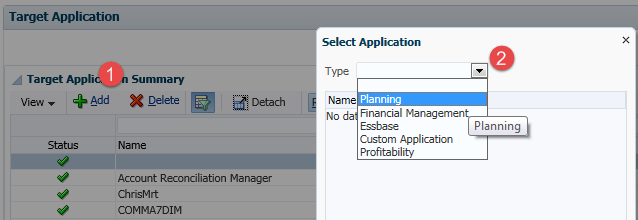
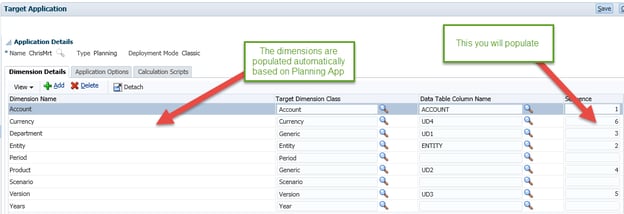
The other configuration will be very similar to FDM Classic as we have to set the Application Options. This involves how FDMEE will interact with Planning/Essbase including Load Method, Drill Region, Global User, Load Rule, etc.
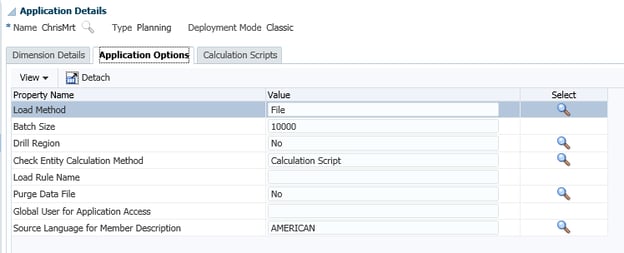
Load Method
‘Load Method’ allows you to choose from File or SQL. File will work a lot like FDM where it creates a .dat file and then is loaded to Planning via a Load Rule that is dynamically created unless specified in the Load Rule Name in Application Details.
![]()
![]()
I have some more testing to do as to performance impacts of either, but it has always been nice in FDM to be able to view that file that was loaded so I will most likely stick with File loads for a while.
Options for Loading Data
After you have imported and mapped your data you are ready to load to Planning. Here is where you have several options and new options than you did from FDM. We will talk about each of the options but here are the options:
- Store Data
- Replace Data
- Add Data
- Subtract Data
- Override All Data
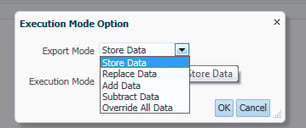
Store Data
- This will replace intersections that are in the load file with the new amount in the load file.
- Think of this as a Merge if you are familiar with HFM
Before the Load After the Load
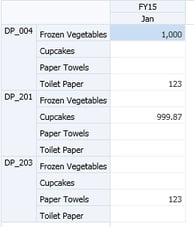
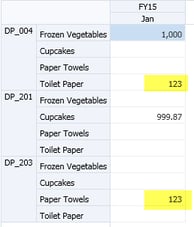
**The highlighted amounts were not in the load file and remained in Planning
Replace Data
- This will natively run a calc script that will Fix on the Year, Period, Scenario and Entity
- This of this as a Replace if you are familiar with HFM
FIX ("FY15","Jan","Final","Sam Mart")
CLEARDATA "Actual";
ENDFIX
Before the Load After the Load
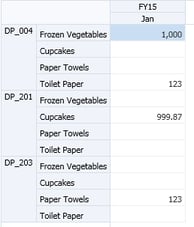
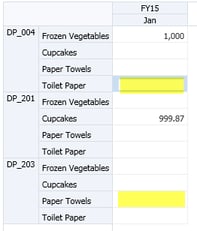
**The highlighted amounts were not in the load file so they were removed
Add Data
- This will add the new amount to the existing amount to any intersections that are in the load file
Before the Load After the Load
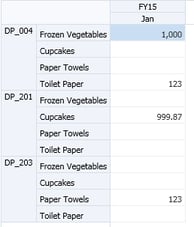
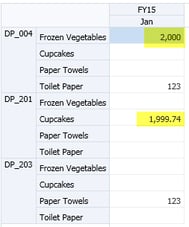
**The highlighted amounts were in the load file and added to what was in Planning
**The other intersections were not in the load file so those remained
Subtract Data
- This will subtract the new amount to the existing amount to any intersections that are in the load file
Before the Load After the Load
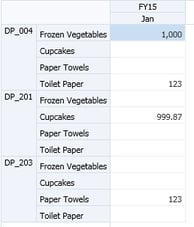
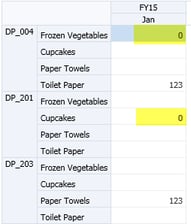
**The highlighted amounts were in the load file and subtracted from what was in Planning
**The other intersections were not in the load file so those remained
Override All Data
- This will clear the entire Database. This is not limited to your POV.
- You will receive this warning message

**This is a rare case in which this should be used and in most cases, we disable this option as we do not want users to choose this accidentally.
What Access is Needed?
Unfortunately this is an area that needs to be improved. In FDM Classic, we could use individual access to Planning to load data. With FDMEE the user needs to be an Essbase or Planning Administrator. Here are the details per the FDMEE Admin Guide:

Not ideal obviously and something that should be modified in future releases.
How can I run Calc Scripts to Clear and Agg the Data?
We have been using FDM Classic to initiate Calc scripts to clear and aggregate data for years. The Calc scripts were either called on the Essbase server or embedded in the FDM Adapter Actions. When calling on the Essbase server, we couldn’t pass in parameters from the POV so we would either embed the calc scripts in the LOAD or CONSOLIDATE Action (that syntax could get really ugly) or use a combination of .bat and MaxL files to run calc scripts.
With FDMEE, we kind of have the best of both worlds. We can now reference a Calc Script on the Essbase server and pass in parameters from the FDMEE POV. Essentially we can use Subvars that FDMEE passes into the Calc script.
Here is how it works:
- The Calc Script will exist on the Essbase Server and we set up a Calc Script Name under Register the Target Application
- These can be set-up with a Script Scope of Application, Data Rule, Location or Category

- They can be run at 4 different Events
- Before Data Load to customize the Clearing process
- After Data Load to Calc the data after a load if you aren’t using the Check Report
- Before Check to Calc data if using the Check Report
- After Check to Calc data after the Check Report appears

- You will also need to pass in any Calc Script Parameters. Think of these as SubVars in your Calc Script
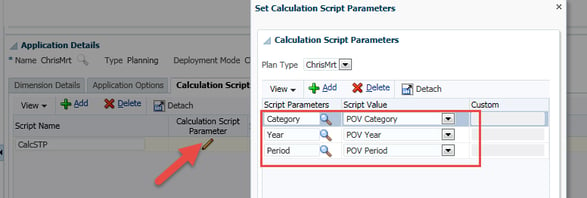
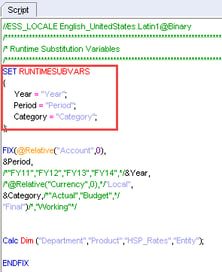
- When loading the data, you can check the FDMEE Process Log and the Essbase Log and see the Calc script that was run
FDMEE Process Log
![]()
We will end it here and pick it up next time with some cool customizations that we did in FDM and how we can translate that to FDMEE.
